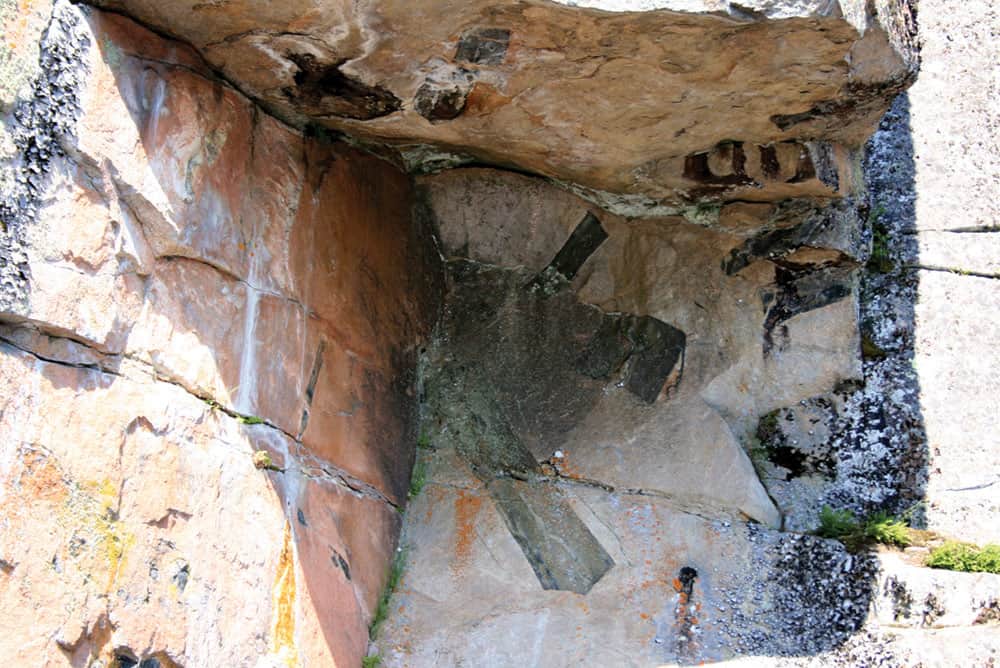
When the Canoe the Heart Expedition stopped at the Crooked Lake Pictographs this summer, Friends of the Boundary Waters Wilderness summer intern Kate Logan noticed a splotch of dark, black rock embedded in the pink granite rock face. A master’s student in environmental policy and natural resource management at Indiana University, she offers this explanation of its significance:
What we see in this picture is very special, a geologic moment and process forever frozen in time.
The darker rock is called a zenolith. It’s formed when an intrusive magma body (molten rock), in this case the pink granite, invades an area of country rock (whatever rock was there originally). The darker material was the country rock in this example.
The dark basalt was pulled off from a larger piece of country rock perhaps minutes or years earlier. While the pink granite was still molten and very hot, it melted the surrounding country rock. The magma slowly melted its edges until just this tiny piece remained. For some reason, it never melted completely: perhaps the magma was caused by a hot spot that had moved on, or a descending plate became inactive. In any case, there was not enough heat to melt the last little piece of dark basalt. Around it, the magma cooled slowly, underground, over thousands of years. This allowed the growth of various crystals that give granite its characteristic appearance, and the dark basalt embedded in it was preserved as a glimpse into the past.
Here’s an analogy: It’s like putting a sugar cube into a glass of water and then sticking it in the freezer. The water is like the pink granite, dissolving the dark basaltic sugar cube. By freezing the whole glass you would preserve something very similar to your picture. You would have a bunch of ice with a piece of sugar starting to dissolve into the water.
The Crooked Lake Pictographs are located on the west shore of Crooked Lake, just north of Lower Basswood Falls.
This article appeared in Wilderness News Fall 2009

